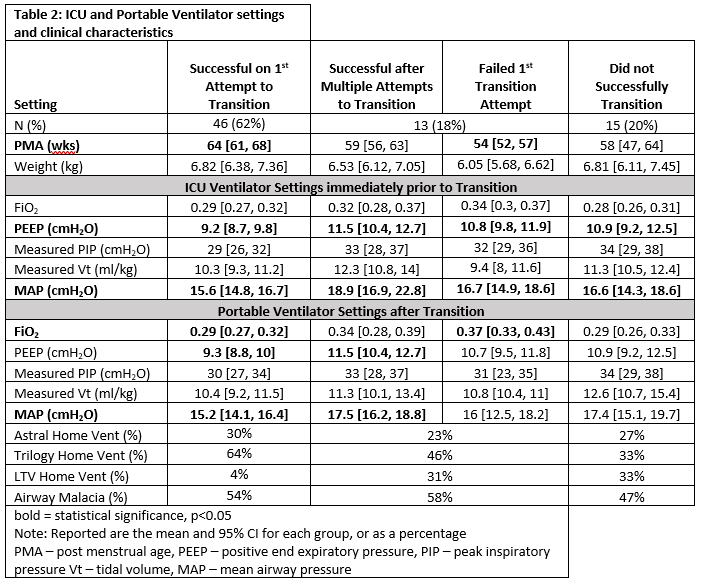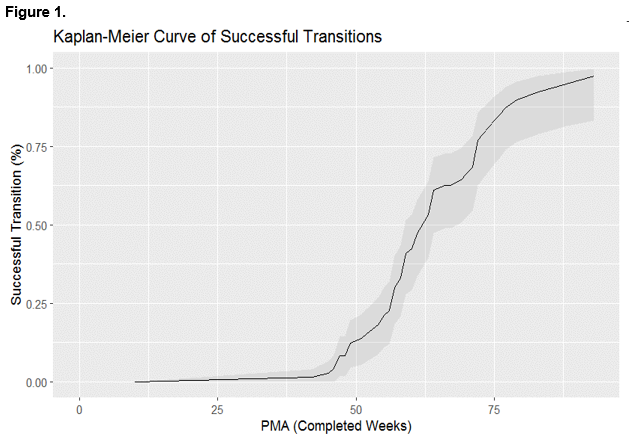Neonatology
Session: Neonatal Pulmonology - Clinical Science 4: Clinical Practice Questions, Going Home
558 - Home Ventilator Transition Optimization Pilot Study
Monday, May 6, 2024
9:30 AM - 11:30 AM ET
Poster Number: 558
Publication Number: 558.3317
Publication Number: 558.3317

Robin McKinney, MD (he/him/his)
associate professor of pediatrics
HASBRO CHILDREN'S HOSPITAL
Providence, Rhode Island, United States
Presenting Author(s)
Background: An estimated 31% of children with grade 3 bronchopulmonary dysplasia (BPD) require chronic invasive ventilation. A necessary step in the pathway toward discharge of ventilator-dependent infants is the transition from an ICU ventilator to a portable home ventilator (PHV). Factors associated with successful transition to PHV remain uncertain.
Objective: To identify clinical factors and ventilator settings associated with the successful transition to a PHV in infants with grade 3 BPD.
Design/Methods: A retrospective chart review was conducted at 15 centers within the BPD Collaborative. 74 ventilator-dependent children with grade 3 BPD were included, with a maximum of 5 subjects from each center (transitioned March 2021-March 2023). Demographic information and ventilator settings before and after the transition were collected. Data were analyzed at: 1) successful first transition, 2) failed first transition (placed back on ICU ventilator within 10-days), 3) successful transition after multiple attempts, or 4) never successfully transitioned. Data are presented as means and 95% confidence intervals.
Results: The mean postmenstrual age (PMA) at first transition attempt was 61 weeks (Table 1) with more than half successfully transitioning on the first attempt (62%) (Table 2). Transitions occurred in the NICU, PICU, and pulmonary/chronic care units (74%, 17%, and 9%, respectively). Patients who successfully transitioned on the first attempt vs those who required multiple attempts or were never successfully transitioned had a lower positive end-expiratory pressure (PEEP) (9.3 vs 11.5 vs 10.9 cmH2O) and a lower mean airway pressure (MAP) (15.6 vs 18.9 vs 16.6 cmH2O) on the ICU ventilator (Table 2). Patients with failed first transition to PHV had higher FiO2 compared to those with successful first transition, and those with successful transition after multiple attempts had higher PEEP compared to those with successful first transition. Over 75% of the patients had successfully transitioned to a PHV by 75 weeks PMA (Figure 1).
Conclusion(s): Children with grade 3 BPD requiring chronic ventilation who were successfully transitioned to a PHV on the first attempt required lower PEEP and MAP than patients who failed the first transition attempt. Some children may require more time to achieve respiratory stability or more respiratory support to transition successfully. These data will be helpful in guiding clinical decisions regarding timing and titration of PHV transitions.
.png)


